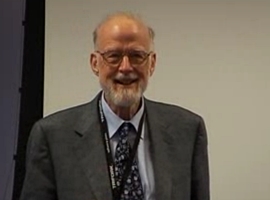Finding this long essay (presently down, see archive here) a good read. Here’s an extended excerpt:
Today, it is hard to imagine the circumstances prevailing in the 1960s. We must recall that the computing community was strictly split into two professional camps. The scientists and engineers used Fortran for their programming large-scale, word-oriented, binary computers, wheres the business community used Cobol for their smaller, character-oriented, decimal machines. System programmers were labouring within computer companies using proprietary machine-code assemblers. There were attempts to unite the two worlds, such as the highly innovative Burroughs B-5000 computer, or IBM’s programming language PL/I. Both were ill-fated and devoured considerable budgets. Pascal was another such attempt, although less ambitious and without budget or industrial support. It applied the idea of recursively defined structures not only to executable statements, but also to data types. As elements, it adopted arrays (vectors, matrices) from Fortran and Algol, as well as records and files from Cobol. It allowed them to be freely combined and nested.
The other fact about the 1960s that is difficult to imagine today is the scarcity of computing resources. Computers with more than 8K of memory words and less than 10us for the execution of an instruction were called super-computers. No wonder it was mandatory for the compiler of a new language to generate at least equally dense and efficient code as its Fortran competitor. Every instruction counted, and, for example, generating sophisticated subroutine calls catering to hardly ever used recursion was considered an academic pastime. Index checking at run-time was judged to be a superfluous luxury. In this context, it was hard if not hopeless to compete against highly optimized Fortran compilers.
Perhaps see also
(Some writings on) some crucial writings in computing
